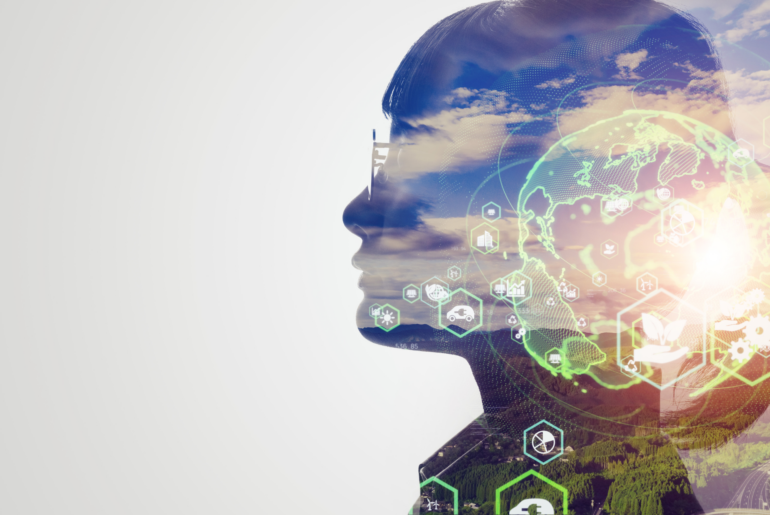AI has come a long way, turning from a futuristic concept into a driving force behind some of today’s most exciting and impactful innovations, but that benefit comes at a cost. AI requires performance-intensive computing achieved with high core count CPUs, coprocessors such as GPUs, and high-speed networking, which can require up to 10 times the amount of power for AI infrastructure compared to general-purpose computing. While organizations need to minimize the environmental impact of AI, the true sustainability promise of AI is how to make all industries more sustainable.
Energy and Carbon Estimates
IDC estimates that AI datacenter energy consumption was 23.0 Terawatt hours (TWh) in 2022, growing at a CAGR of 44.7% and reaching 146.2 TWh by 2027. To put that into perspective, the forecasted total for 2027 exceeds the estimated 2021 country usage of Sweden, Argentina, or the United Arab Emirates1. In recent years, the datacenter industry has made significant strides in sustainability. Despite being expected to account for 18.0% of the carbon emissions in 2027, AI is expected to account for 14.6% of all datacenter carbon emissions. Those sustainability efforts are apparent, but unfortunately, carbon emissions are still expected to grow by 2027.
Completing the Journey to Net Zero
Regardless of industry, most organizations see the business value of environmental goals, with many having set net-zero targets. In IDC’s Datacenter Operations and Sustainability Survey, datacenter operators indicated that Improving Sustainability was their second-highest priority. While sustainability goals can be a tapestry of many initiatives, three principles stand out: energy sourcing, efficiency, and circularity.
Energy Sourcing
Data centers significantly lower their carbon footprints by leveraging renewable energy sources such as solar, wind, and hydroelectric power, whether onsite generation via microgrids or funded via power purchase agreements, long-term contracts between an electricity generator and a buyer to purchase renewable energy at predetermined prices. Many sustainable data centers also invest in energy storage solutions to effectively balance supply and demand. Technologies such as advanced battery systems and thermal storage help ensure a consistent energy flow, even when renewable sources are intermittent or the generation grid mix is unfavorable.
In addition to traditional carbon-free renewables, the industry is starting to see investment and implementation via hydrogen and nuclear power.
Efficiency
Simply put, efficiency is maximizing datacenter performance and minimizing resource usage, including energy, space, and hardware. Furthermore, sustainable datacenters often implement energy-efficient infrastructure, such as advanced cooling systems, workload consolidation and optimized server configurations, to minimize energy consumption. By prioritizing these green energy initiatives, sustainable datacenters also pave the way for more resilient and cost-effective data management solutions.
Efficiency is not limited to energy. Datacenter water efficiency focuses on minimizing water usage in cooling systems and other operational processes to reduce environmental impact. Techniques such as liquid cooling, evaporative cooling, and water reclamation systems help data centers achieve this goal by optimizing water consumption and recycling. By implementing these strategies, datacenters can significantly lower their water footprint while maintaining optimal performance and cooling efficiency.
Circularity
AI is driving the need for IT asset refreshes. Datacenter capacity planning that includes the circularity, or resale, value of IT assets can open up investment capacity for GenAI budgets and new equipment. IDC forecasts the market for refurbished IT equipment and attached services to reach nearly $15 billion in 2028.
Responsible processing of the used datacenter assets, whether they get recertified for redeployment and resale, harvested for parts, or recycled, represents an opportunity to not only create investment capacity but also be part of meeting corporate sustainability targets. IDC research shows that while organizations increasingly value a broad set of sustainability factors when it comes to IT procurement, the sense of shared sustainability aspirations with suppliers and partners comes in as a top 2 requirement.
Another example of circularity is waste heat reuse. Liquid cooling, a staple in AI datacenters, involves capturing the heat generated by servers and repurposing it for other uses, such as heating nearby buildings or industrial processes. In addition to its energy efficiency, liquid cooling enhances energy efficiency and reduces the data center’s environmental footprint.
AI For Sustainability
While AI will undeniably consume significant amounts of energy, making every effort to implement sustainable AI practices is crucial. This energy use should be viewed as an investment in a more sustainable world, as AI has the potential to drive substantial improvements across various industries. Despite the projected increase in energy consumption, IDC forecasts that datacenters in total, not just AI, will account for only 2.5% of global energy use by 2027, highlighting its relatively modest footprint. The true value of AI lies in its ability to enhance sustainability in sectors such as agriculture, manufacturing, and transportation by optimizing resource use, reducing waste, and improving efficiency. Thus, embracing AI responsibly can lead to a net positive impact on global sustainability efforts, outweighing its energy demands.
Learn what matters most to your customers with IDC’s AI Use Case Discovery Tool—find out more.




